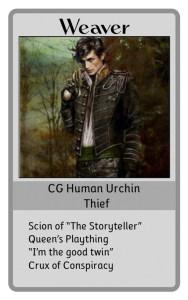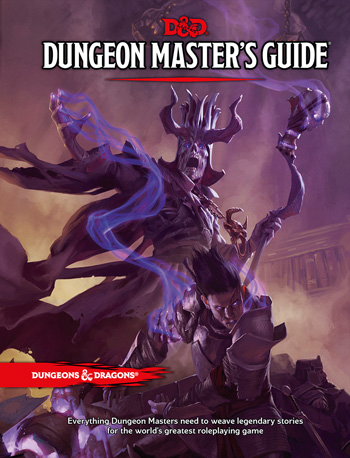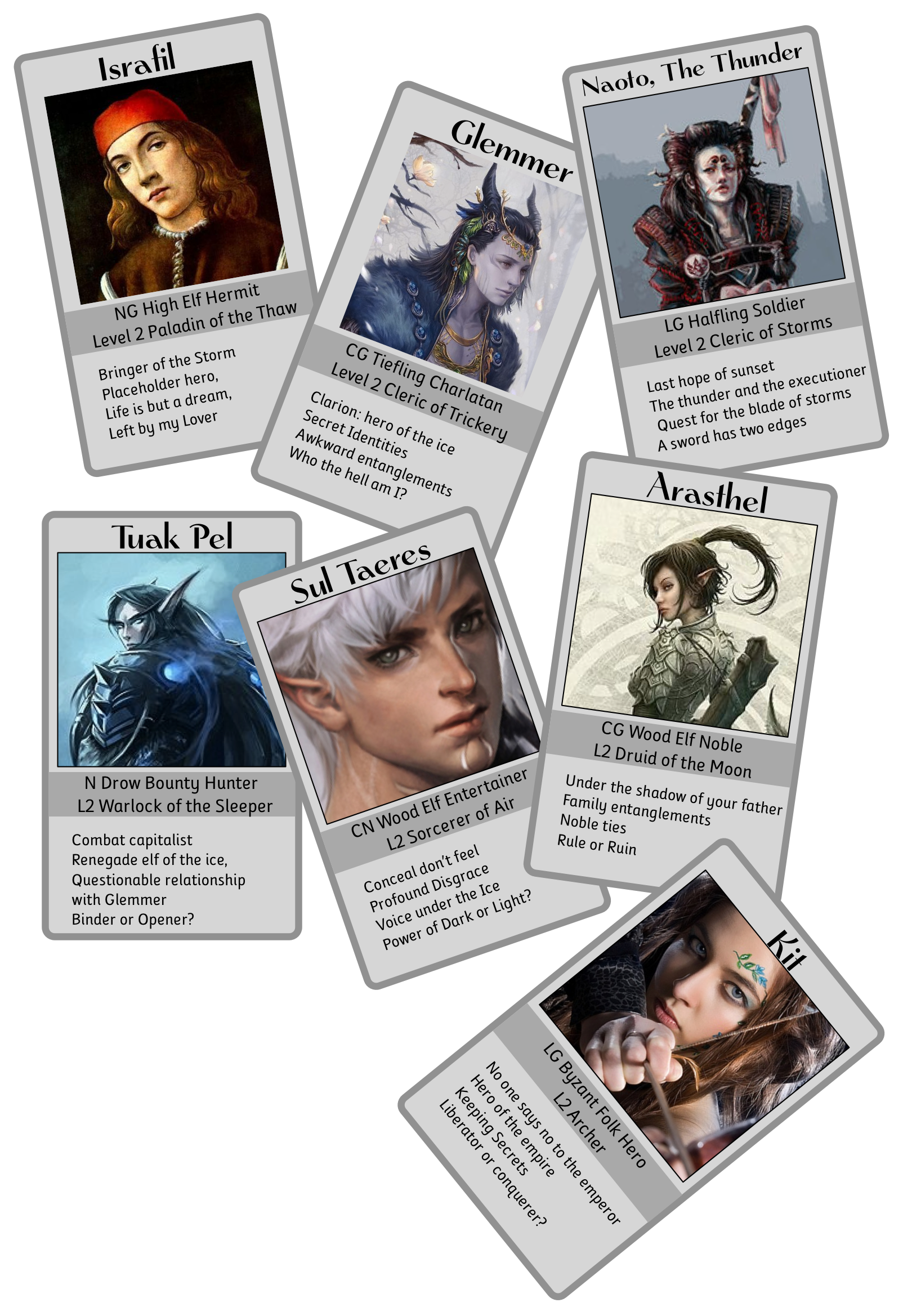For a while, I had been considering setting up a fallback D&D game for the local crowd. Something simple and easy to pick up for situations where schedules explode and such. This idle though ended up intersecting with a pair of curiosities: How does high level D&D play really feel in practice, and what does an all martial game feel like?
The result is a standby game designed with a sort of Lankhmar vibe, with a collection of characters who are personally badass, but are still skipping out on their bar tabs.
For ease of use, we went with the Forgotten Realms, but picked a less traveled corner of it. I have always been struck by the idea of the Shining Sea (in the southwestern corner of the map) as a trade sea. Just based on geography, it’s a lot more interesting in that regard than the Sword Coast, and I kind of wanted to lean into that.
So, with that in mind, I started digging into the setting and figuring out what to keep, what to toss, and what to roll with.
Timeline wise, I figured I’d set the game a little bit (say, ~20 yers or so) after the “current” 5e era, which I’m anchoring as “The events in Tomb of Annihilation”. I’m picking that particular anchor because Chult is one of the nations on the Shining Sea, not some weird foreign backwater. Also, I rather enjoyed the characters in the Tomb of Annihilation campaign we played, so this gives me the opportunity to clean up some setting elements I didn’t like, while also potentially arranging some future guest appearances.
Which lead to geography.
I looked over the maps of the various editions, and one thing that jumped out is that 4e really did a number on the south. Prior to the spellplague and related events, the Shining Sea looked like:
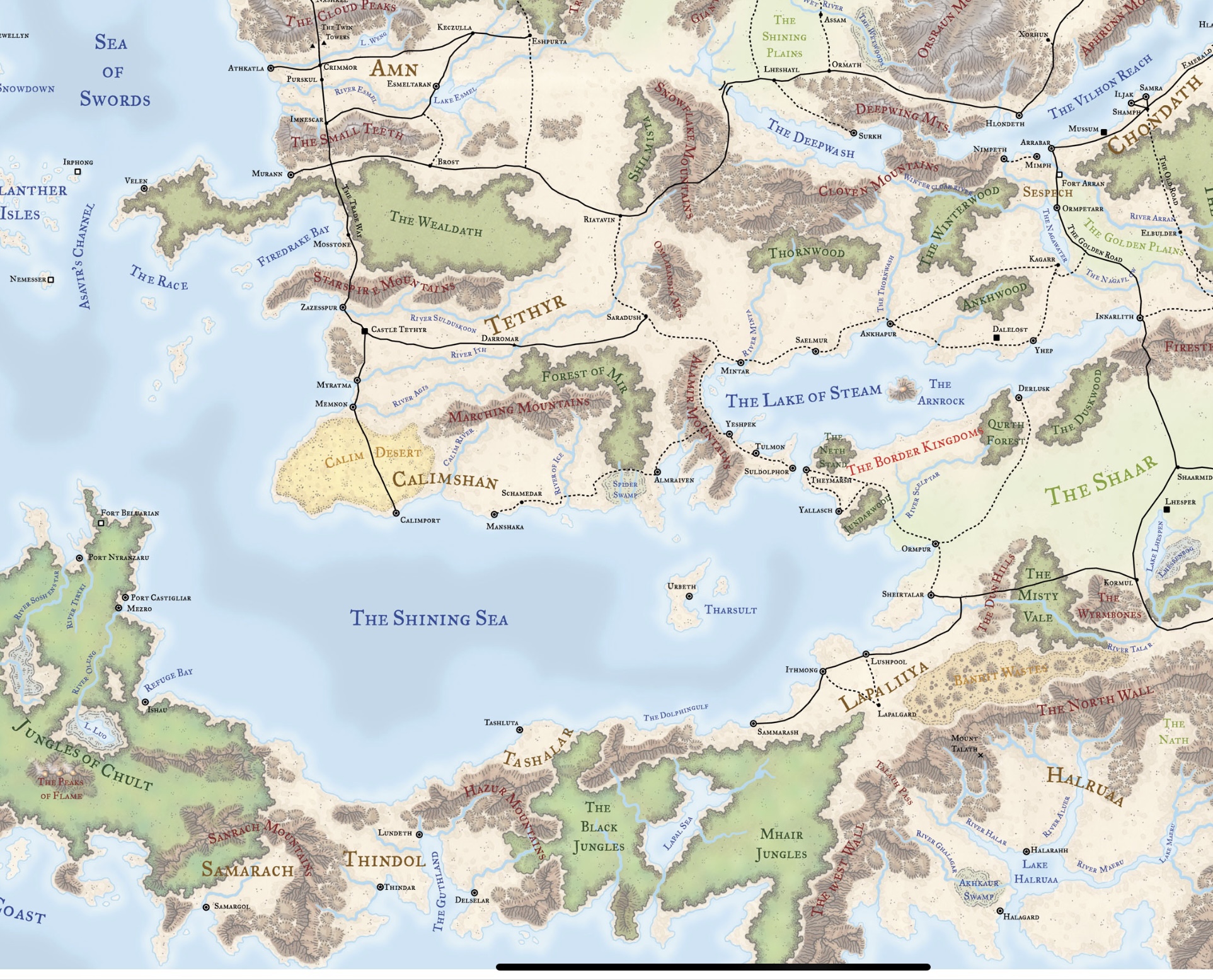
After 4e mugged it in an alley and went through its pockets, we got
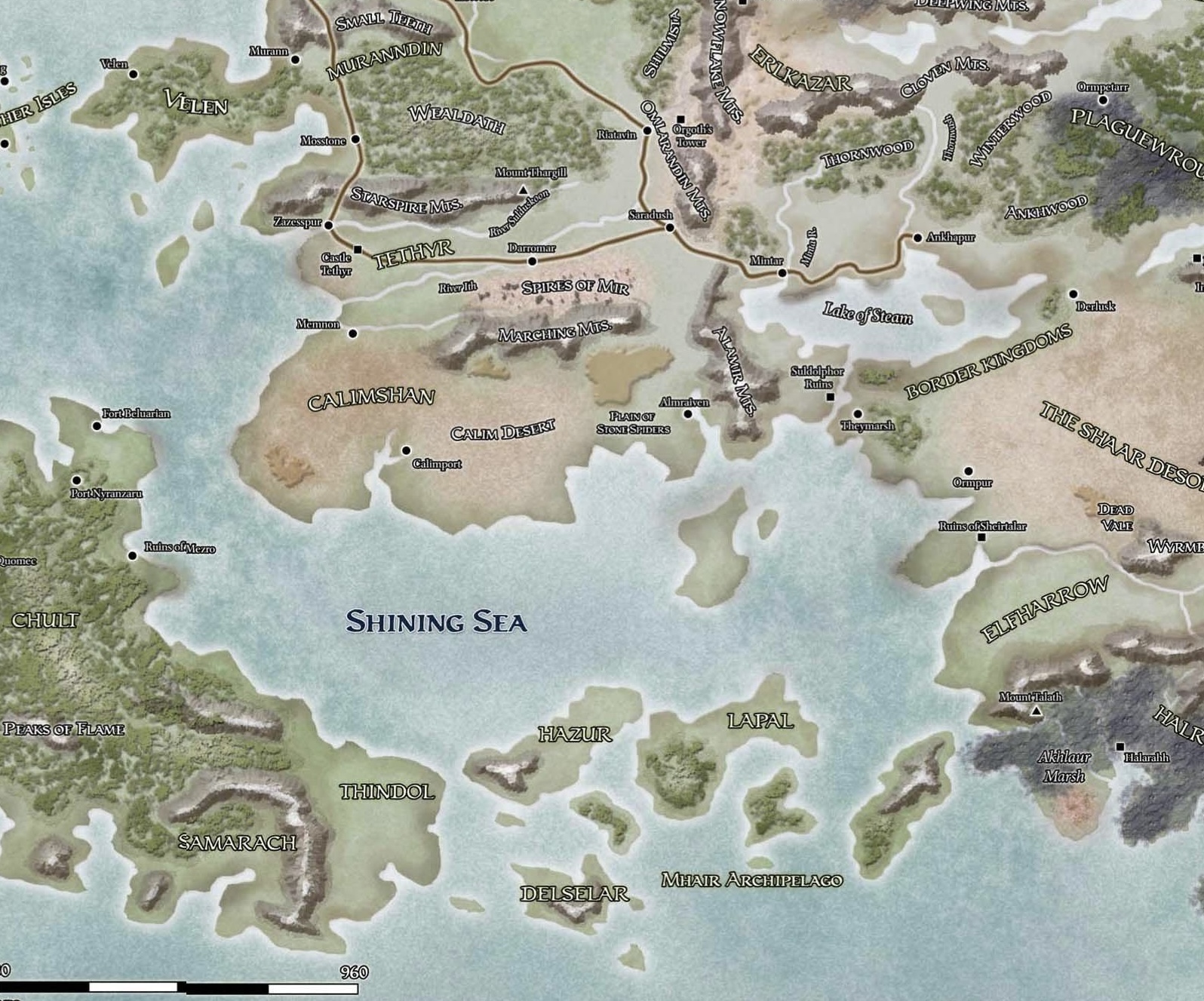
So you don’t need to spend a lot of time flipping back and forth, the big differences are:
- Halruaa is now more or less a magical smoking crater
- The land bridge connecting Chult to the Mainland is now an archipelago
- The Shaar grasslands are now a desert.
- The inland sea- the Lake of Steam, is greatly reduced in scope
There are other changes, of course, but those are the big ones.
Now, I’m largely ok with the Halruaa thing – a big magical disaster was on point for a magical nation, and it creates something that has been “lost” within recent memory, as well as a dangerous place for things to happen or come from. So, that’s cool.
I’m kind of leery of the destruction of the land bridge, but I can lean into that. In my version of things, that whole arm used to be a sort of trade alliance, with Chult in a position of prominence. The disaster did a number on that, and also explicitly weakened Chult sufficiently that Amn could come in to “help” them recover, setting them up as a client state, and more or less explaining a lot of the political and economic weirdness in Tomb of Annihilation.
I’m not super hot on the destruction of Shaar, largely because it’s really boring. If you zoom out on the map, the eastern edge of Shaar is now a preposterously large hole in the ground down into the Underdark, and it feels like someone decided there should be some consequences to that, so they rolled out a desert and wiped it away. This bugs because Shaar’s really interestingly diverse as its conceived, and gives space for a lot of races and cultures that are squeezed out of the rest of the map. On the other hand, I still wanted a disaster of some sort, just to roll with the theme.
So, I rolled back the desert, but replaced it with rips in reality. Swaths of Shaar now touch upon (and sometimes drift back and forth into) the Feywild and the Shadowfell, and as a result, the whole place has gotten more dangerous. This is more pronounced to the east, but the problems have been pushing slowly westward, forcing locals to either adapt or flee. Result is that it’s a wild place, full of excuses for weirdness, but it also gives a good source for a wide variety of people to come from, which is something I want in this hypothetical city.
But for all that, it was the last thing that really stuck in my craw.
See, I look at the 3e map of the Shining Sea, and I see a trade sea with numerous interesting cities, with a narrow stretch of water connecting it to another, smaller trade sea. Which is to say, I look at that map and I see a location that absolutely resonates with Istanbul/Constantinople, which is a darn good starting point for any city. And then I see that 4e really decided to stomp on that as hard as it could, not only changing the geography of the water, but also more or less explicitly torpedoing all those interesting trade cities in favor of generic weirdness.
So, that wouldn’t stand, simple as that. I knew where I wanted my city, and I knew I wanted robust trade, specifically pulling upon two historical influences – Istanbul, and the Indian Ocean trade routes. But the good news is I had over a century since the events in 4e, and that gave me the lever I needed, since all it really took was time to let the Lake of Steam fill in again, and for the various cities to make their recoveries. By doing that, it allowed my as-yet-unnamed city to start to coalesce into shape.
Sidebar: No Hard Feelings, 4E
It may come across that I have some hard feeling towards what was done to the setting in 4e, and I suppose I do, but it’s not something I’m upset about. There are a lot of factors in play when editions change, and the general decision to drastically upend the Realms was entirely reasonable on paper. What’s more, they made the probably-entirely-reasonable decision that this was not a section of the map that there was a lot of emotional investment in – the further you get from Waterdeep and the Dales, the fewer people really care what happens in the setting.
Plus, frankly, there were two good reasons for some of the changes. First, a lot of them were more thematically in line with 4e and it’s points of light ethos. By breaking everything drastically and making everything kind of a mess filled with dramatic and visually striking badness, you set up a very 4e friendly sort of setting.
Second…well, a lot of stuff the blew up had been kind of cringey. If you dig into the old sourcebooks about the South, you will not have to wait long for words like “exotic” to start showing up. In more traveled parts of the Realms, the weaker parts of the world-building were frequently shored up by the patina of history that came from layering material atop itself many times, but for these “exotic” locales, it was more likely to just reinforce the bad patterns. There’s something to be said for cleaning out that particular detritus.
I’m sort of torn on this, because on one hand, it feels a little uncomfortable to deal so explosively with the places which exist for foreigners to come from. But on the other hand, it’s not like they were going to take the time to flesh them out, especially in a single FR book.
But, ultimately, I get it. Someone had a job, and that job was to blow up the South. And, honestly, until I decided I explicitly wanted to move off the Sword Coast, I hadn’t really noticed. I had to re-read a lot of material to remember what had even happened in the South, so they probably did their job right.
Thankfully, one of the joys of this hobby is that my hands aren’t tied by those past decisions. I find it useful to study and understand them, but only so I can take ownership of the things I intend to do.



 Hopping back to the Elvish Empire for a moment
Hopping back to the Elvish Empire for a moment